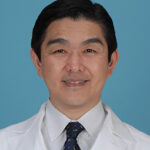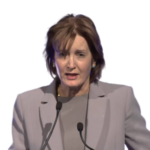The 58th Annual Meeting of the European Association for the Study of the Liver (EASL 2023) and the EASL Congress 2023 have brought forth a splendid academic gathering for the global hepatology community. The Hepatology Digest reporting team had the privilege of interviewing Doctor Thomas Berg, EASL Secretary-General and Head of the Hepatology Department at Leipzig University Hospital. He shared with us the highlights of this conference, his perspective on significant research developments, thoughts on the renaming of Non-Alcoholic Fatty Liver Disease (NAFLD), and insights into the future research directions for fatty liver and hepatitis B.
Hepatology Digest : As the Secretary-General of the conference, could you please introduce the scale and distinctive features of this year’s event, as well as its highlights?
Doctor Thomas Berg : This year’s EASL Congress 2023 in Vienna has attracted nearly 7,000 attendees, making it a remarkable audience. Our program is highly diverse, covering various areas, including basic science, clinical translation, policy, and public health. We provide symposia for patients, nurses, and other healthcare professionals, offering multifaceted discussions and solutions for liver disease issues.
Moreover, we have presented some fascinating research abstracts during the Late Breaker session. In the General session, a Phase III clinical trial on non-alcoholic fatty liver disease (NAFLD) reported positive results. We also discussed data related to liver cancer, viral hepatitis elimination, advanced liver disease, and liver cirrhosis. For instance, there was a discussion on the potential of oral anticoagulant drugs like rivaroxaban in improving patients’ quality of life and the use of naltrexone in treating alcohol addiction. Additionally, we explored alternative therapies or interventions for patients with decompensated late-stage liver disease through microbiota manipulation.
The content of this conference has provided us with valuable new knowledge. All registered attendees have access to this content and can view it at their convenience or obtain later access to the data. Furthermore, we have awarded outstanding scholars. We presented the Innovation Award to Professor Koichi Tanaka from Japan, recognizing his innovations in liver transplantation. Professor Tanaka, a great pioneer, attended the conference, and I had the honor of personally presenting him with this award.
Hepatology Digest : The renaming of Non-Alcoholic Fatty Liver Disease (NAFLD) has been a topic of debate. What is your perspective on this renaming, and what are the reasons behind it?
Doctor Thomas Berg : The name Non-Alcoholic Fatty Liver Disease (NAFLD) does not accurately describe the condition, and we are actively seeking a more fitting term. This name can be confusing to patients and may carry a stigma, further exacerbating discrimination against liver disease patients, as it suggests an association with alcohol for each patient.
However, how can we achieve consensus on a global scale? Therefore, organizations like the American Association for the Study of Liver Diseases (AASLD), the European Association for the Study of the Liver (EASL), and the Latin American Association for the Study of the Liver (ALEH) have established a steering committee and a Delphi expert group to seek consensus and determine the actions to be taken. The consensus is that we need to change the name. So, we did request a renaming.
After years of work, we found that it should be an overarching term called Steatotic Liver Disease (SLD). SLD is then divided into various types, one of which is now known as Metabolic Dysfunction Associated Steatotic Liver Disease (MASLD). There are other classifications as well, which can be found in the Delphi consensus definitions.
Metabolic Dysfunction Associated Fatty Liver Disease (MAFLD) is a significant step in the right direction. “Metabolic” is an important descriptor of the condition, and this was the consensus in the current naming process. Most people wanted the term “metabolic” to be included in the name. I believe that the definitions of MAFLD and MASLD are now very similar, with some subtle differences, but the new naming approach is more comprehensive, encompassing all forms of steatotic liver disease.
Hepatology Digest : There are still many unmet clinical needs in the prevention and treatment of NAFLD. What do you consider the future focus and trends to be?
Doctor Thomas Berg : Currently, approximately 30% or more of the population is affected by fatty liver, and this percentage is expected to continue rising. However, as experts in hepatology, we have the capacity to address this situation comprehensively.
I believe the most crucial aspect is finding a new diagnostic method to determine when fatty liver progresses to a point where it requires management by hepatology specialists. This will involve the use of biomarkers, non-invasive testing, and other means. Furthermore, I believe that the exploration of new diagnostic methods will become even more critical if new treatment methods become available. If we can offer effective treatment solutions, it will completely transform the field. In essence, the key is to identify the timing of fatty liver progression and the point at which specialized treatment is necessary.
Moreover, addressing this global issue requires collaboration with policymakers, not just hepatologists, to reduce the public health burden of fatty liver disease and manage it in primary healthcare settings.
Hepatology Digest : Currently, most hepatitis B patients cannot achieve a cure. What are the advancements in the development of new drugs and exploration of new treatment strategies for hepatitis B? What do you see as the future research focus and trends?
Doctor Thomas Berg : We have treatments that can effectively control hepatitis B virus (HBV) infection, but a long journey lies ahead to achieve a complete cure.
We have gained a lot of insights into new medications, allowing us to intervene in crucial stages of the HBV infection cycle. Although we are still in the early stages, there have been follow-up studies conducted for 24 to 48 weeks after stopping hepatitis B treatment with the intention of curing it. The results have shown sustained elimination of hepatitis B surface antigen (HBsAg).
This is very encouraging news, but I believe there is still a long way to go before we have a potent treatment regimen that can cure most patients. I think the key is how to timely combine antiviral and immune modulation therapies to cure a higher percentage of patients.


